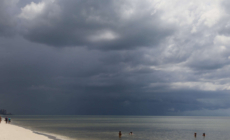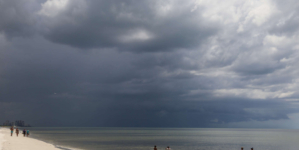-
National Guard on Scene Following Los Angeles Protests: Police - 16 mins ago
-
Chris Pratt shows off dramatic transformation with fake mustache on set - 24 mins ago
-
A bright side to another loss? Why the USMNT feels good despite sloppy showing - 39 mins ago
-
A political lesson for L.A. from an unrestrained president - 44 mins ago
-
Southern States Brace for Storms After Deadly System Saturday - 56 mins ago
-
2025 Big Bets report: Two 7-figure bets land on Thunder to win NBA Finals - about 1 hour ago
-
Zelensky Addresses ‘Complicated’ Aftermath of Oval Office Blowup With Trump - 2 hours ago
-
Former Villanova coach Jay Wright not interested in Knicks head coach job - 2 hours ago
-
House Speaker Says Deploying Marines in Los Angeles Not ‘Heavy-Handed’ - 2 hours ago
-
Prince Harry and Meghan considered Spencer surname amid kids’ passport delays - 2 hours ago
Winter Storm Forecast Map: When Will the Cold Weather End?
Much of the nation is still battling brutally cold temperatures and winter storm impacts, both of which will continue for several more days in some areas.
Why It Matters
Millions of people are facing frigid temperatures through this week. Subzero wind chills hit the Northern U.S. over the weekend and have since spread further into the U.S.
Winter storms also hit the Southeast U.S., stretching from Texas up through part of the Eastern Seaboard. One National Weather Service (NWS) office in Louisiana issued its first ever blizzard warning, and a curfew was established in parts of Louisiana to keep people indoors through the worst of the storm.
What To Know
As of Tuesday, myriad cold weather and winter storm alerts remain in place. The two most severe were extreme cold warnings, which are issued when temperatures reach life-threatening levels, and winter storm warnings.
Brandon Bell/Getty
Extreme Cold Weather Forecasts
In many states, temperatures, when paired with wind chill, plunged to subzero territory. States not familiar with frigid weather also saw brutal cold, including in Texas, Florida and Louisiana.
In addition to the extreme cold warnings, there were cold weather advisories, which are less severe, and freeze warnings in place.
When Are Winter Storm Warnings Ending?
Winter storms created hazardous driving conditions on Tuesday, particularly across Texas and Louisiana, as people in those states are less familiar with winter weather. Snowplows journeyed to Louisiana from Arkansas to help with snow removal, after snowfall reached 5 or more inches in some parts of the state.
By mid-week, all winter storm warnings should expire.
When Are Extreme Cold Warnings Ending?
Extreme cold warnings will expire from west to east. Most states in the central U.S. will see the warnings expire by Tuesday afternoon, including Iowa, Texas, New Mexico, Colorado and others.
Many of the warnings have already been lifted, though the less severe cold weather advisory remains in place across many states.
Extreme cold warnings will remain in place for the southeast, including Louisiana and Florida, up through Pennsylvania, until Wednesday. Some areas in that region, including West Virginia, Virginia and Maryland, will have to endure the frigid temperatures until Thursday.
Will There Be Another Arctic Blast?
Warmer air is spreading across the central U.S. beginning later this week, although below-average temperatures could continue in the Gulf and the East Coast.
Arctic blasts, where arctic air descends into the U.S., aren’t uncommon, but current trends show a warming pattern over the next few weeks.
What People Are Saying
NWS Weather Prediction Center meteorologist Frank Pereira told Newsweek: “Going forward, tomorrow it’s still going to be below to well-below normal temperatures pretty much up and down the East Coast and along the Gulf Coast as well. With those temperatures, we are looking at the potential for record cold temperatures across those areas.”
What Happens Next
According to an eight- to 14-day temperature outlook published by the NWS Climate Prediction Center, temperatures will begin to creep back up until they are above-normal across much of the U.S.
Source link





























